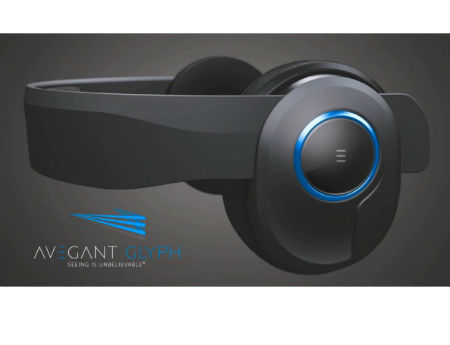Avegant, Gainspeed Wow The Cable Tech Crowd

For the first time, two companies – Avegant and Gainspeed -- tied for top honors at the Innovation Showcase at the recent CableLabs Summer Conference in Keystone, Colo., recognized for having the “Best new idea most likely to succeed.”
While both companies are startups, they are in different technology spheres. While Avegant is a startup focused on a new consumer-facing video gizmo, Gainspeed is working on virtualized version of the Converged Cable Access Platform (CCAP) that aims to revolutionize the industry’s access architecture.
CableLabs, which confirmed the winners as reported by Light Reading last week, has posted videos of the brief pitches from the companies and vendors that were looking to stand apart from the rest, a group that also included BounceIO, RelationDesk, Viddyad, CAPMedia, Immersive Media, Metrological, and NewAer.
Avegant is developing a wearable “virtual retinal display” called the Glyph (see image above) that essentially feeds in video and audio to the product from a smartphone, tablet or another type of mobile device and directly into the users eyes.
“There’s no screen, there’s no LCD, there’s no OLEDs,” Avegant founder Edward Tang explained in the pitch to the CableLabs crowd. “We’re actually mimicking the way that you naturally see.”
According to Tang, Avegant’s pixel-less approach starts with low-powered LED and shoots it through its patented optics and reflects it off of 2 million microscopic mirrors. From there, the light is sent through another set of optics and directly into the user’s eye. Avegant’s display is paired with high quality headphones. “This is a device that’s designed for mobile media consumption,” Tang said.
Despite some seeming similarities to Oculus, the virtual reality firm recently acquired by Facebook, Avegant is not focused on VR or augmented reality, but views itself as a premium A/V experience “for the user’s eyes only,” he said, noting that it could serve as “great second TV alternative.”
Multichannel Newsletter
The smarter way to stay on top of the multichannel video marketplace. Sign up below.
Tang said Avegant is interested in partnering with cable operators, which continue to launch high-quality video apps for mobile devices, and believes that they can use Glyph to drive a new revenue stream.
And the final product is in the works. According to a timeline posted online, the Glyph is in product development, with a commercial release anticipated sometime in 2015. The preorder price is $524 ($499.00, plus $25 shipping), though consumers won’t be charged until the product actually ships.
Sharing the top honors with Avegant was Gainspeed, a startup that is developing a virtual CCAP. Gainspeed still hasn’t announced an actual product, but it has forged interoperability partnerships with with CommScope, Netgear, JDSU and Juniper Networks, which is also one of Gainspeed’s big investors.
During his video pitch, Samir Parikh, Gainspeed’s director of product management, talked up the virtues of a virtualized approach to CCAP that aims to significantly reduce headend space and power requirements while helping cable deliver more bits per hertz and usher in the industry’s all-IP era.
While a traditional CCAP helps to address the power, cost and space issues, “it doesn’t quite go far enough,” Parikh argues, noting that it’s still burdened with QAM video. He said Gainspeed’s approach, which controls everything from the cloud while transferring all cable-specific processing to the node, “eliminates the physical CCAP altogether.”
